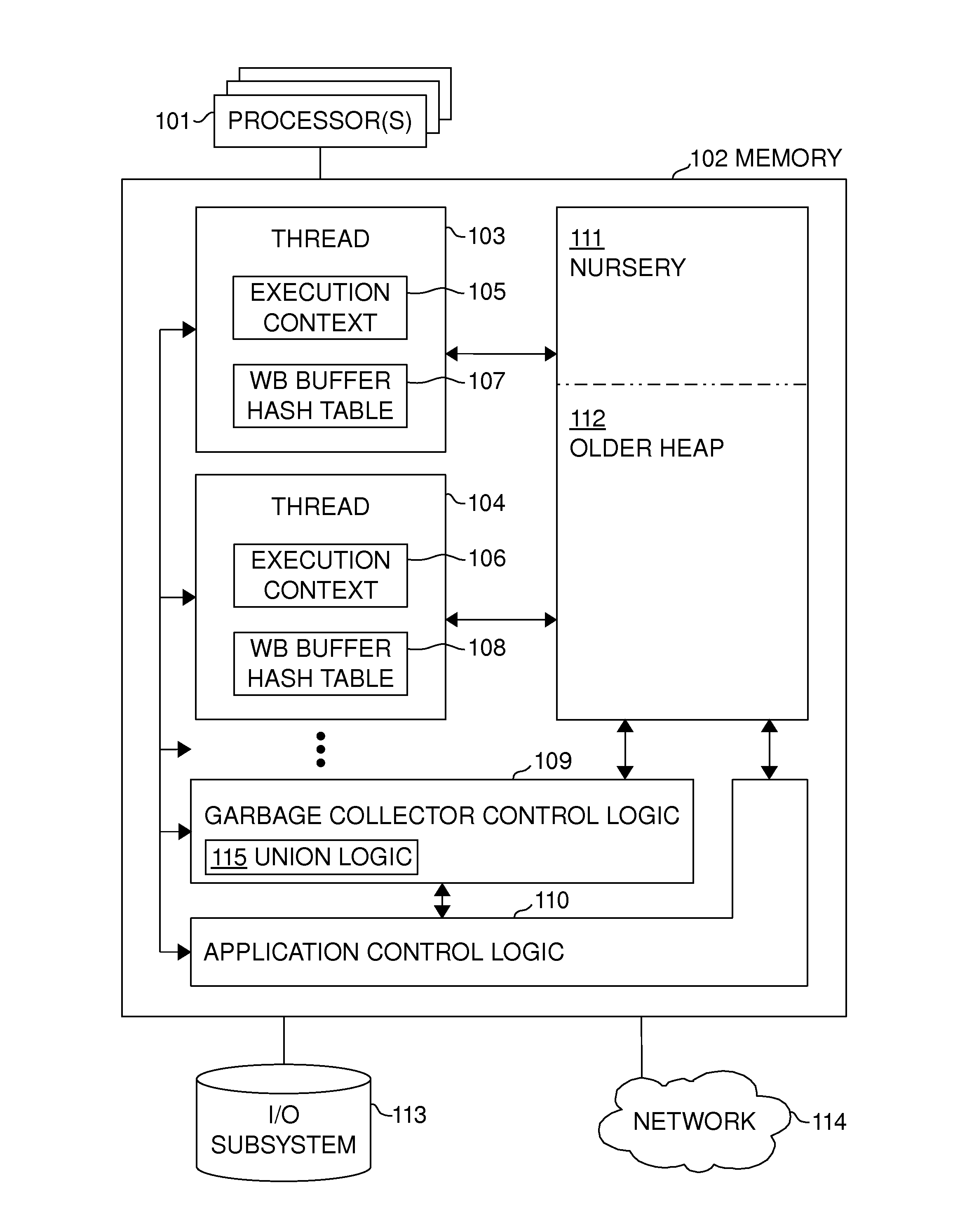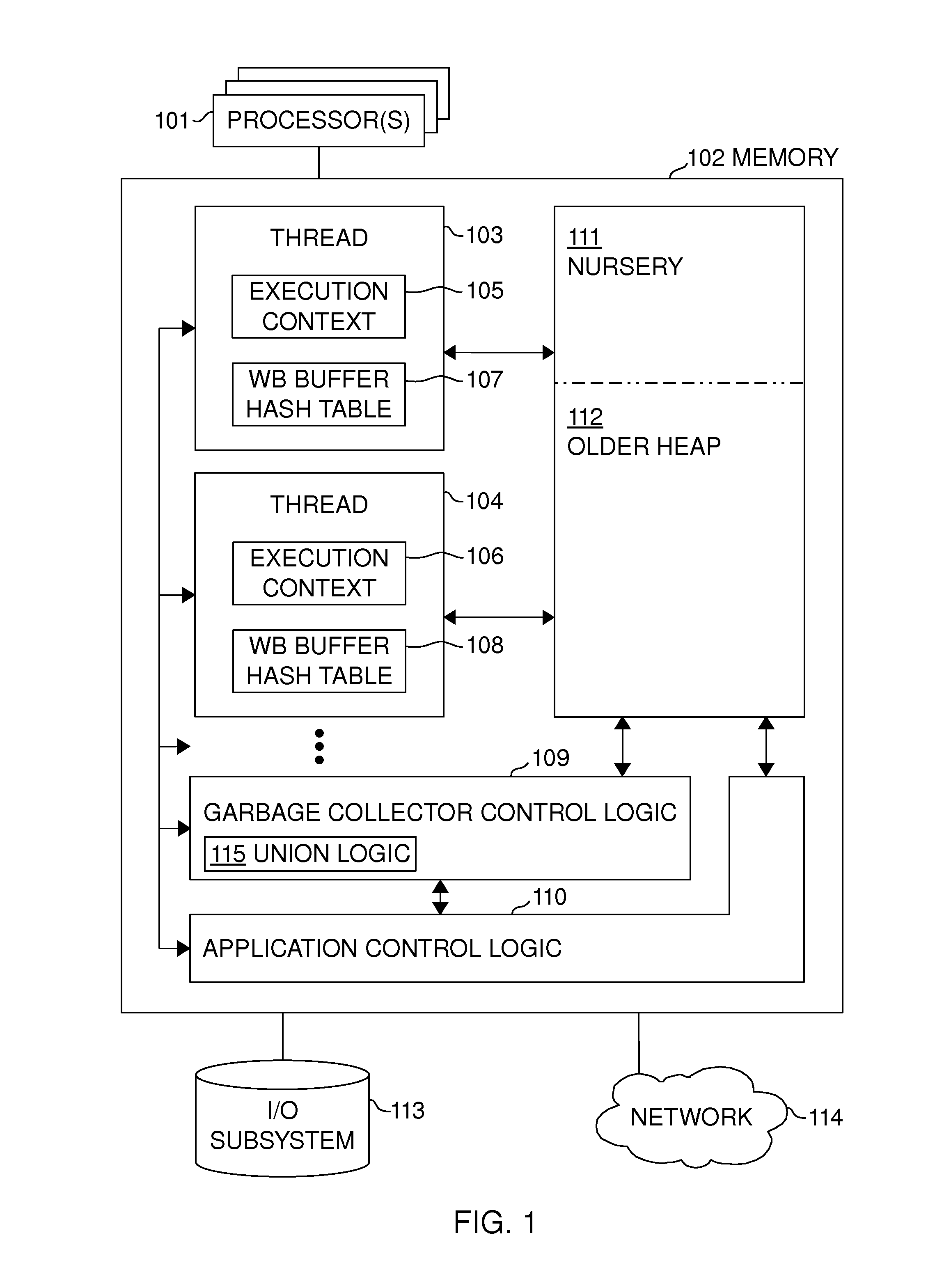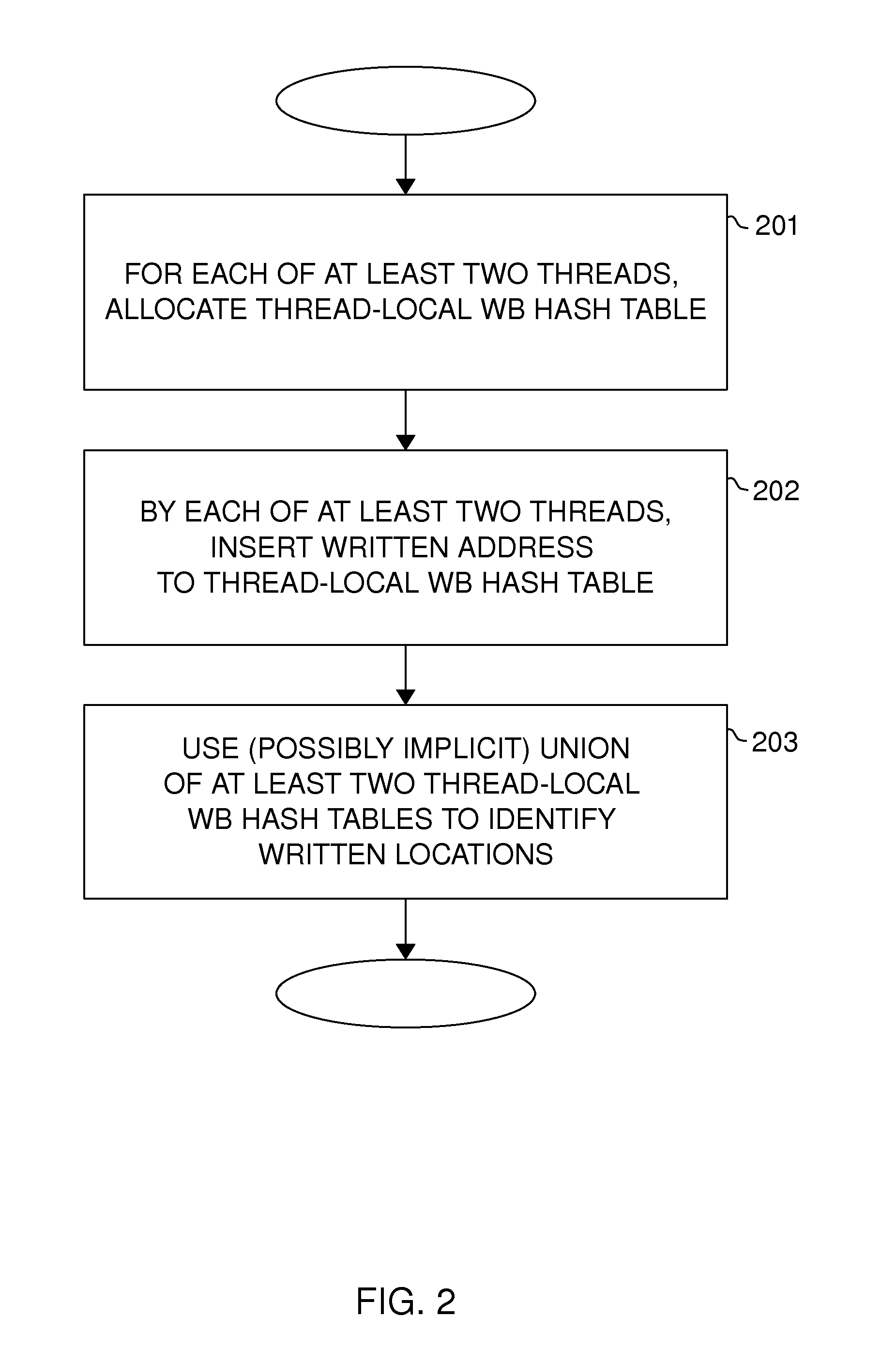Thread-local hash table based write barrier buffers
a buffer and hash table technology, applied in memory address/allocation/relocation, program synchronisation, program control, etc., can solve the problems of inability to know which of the old values saved by various threads for the same address, and the overhead of hash value and address calculation for a hash table has become almost negligible, so as to reduce the overhead of write barrier, reduce power consumption, and prolong the battery life
- Summary
- Abstract
- Description
- Claims
- Application Information
AI Technical Summary
Benefits of technology
Problems solved by technology
Method used
Image
Examples
Embodiment Construction
[0055]FIG. 1 illustrates an apparatus embodiment of the invention. The apparatus comprises one or more processors (101) (which may be separate chips or processor cores on the same chip) and main memory (102), which is in present day computers usually fast random-access semiconductor memory, though other memory technologies may also be used. In most embodiments the main memory consists of one or more memory chips connected to the processors using a bus (a general system bus or one or more dedicated memory buses, possibly via an interconnection fabric between processors), but it could also be integrated on the same chip as the processor(s) and various other components (in some embodiments, all of the components shown in FIG. 1 could be within the same chip). (113) illustrates the I / O subsystem of the apparatus, usually comprising non-volatile storage (such as magnetic disk or flash memory devices, display, keyboard, touchscreen, microphone, speaker, camera) and network interface (114)...
PUM
 Login to View More
Login to View More Abstract
Description
Claims
Application Information
 Login to View More
Login to View More - R&D
- Intellectual Property
- Life Sciences
- Materials
- Tech Scout
- Unparalleled Data Quality
- Higher Quality Content
- 60% Fewer Hallucinations
Browse by: Latest US Patents, China's latest patents, Technical Efficacy Thesaurus, Application Domain, Technology Topic, Popular Technical Reports.
© 2025 PatSnap. All rights reserved.Legal|Privacy policy|Modern Slavery Act Transparency Statement|Sitemap|About US| Contact US: help@patsnap.com



